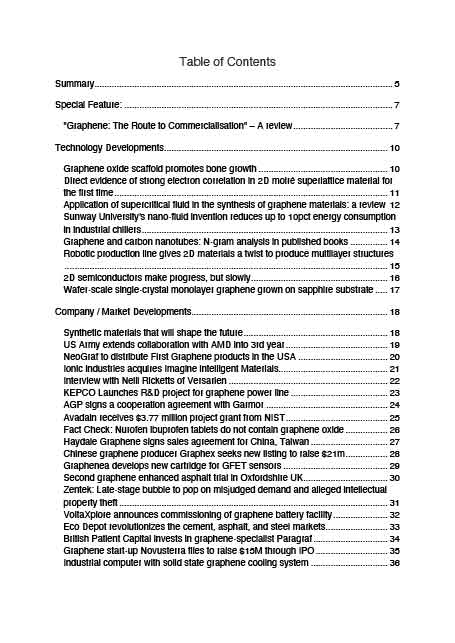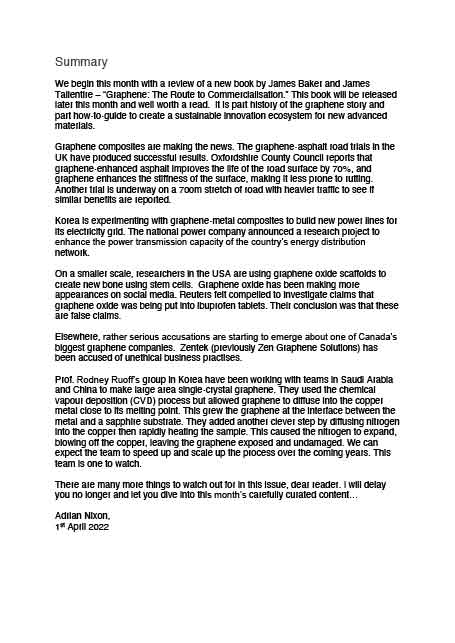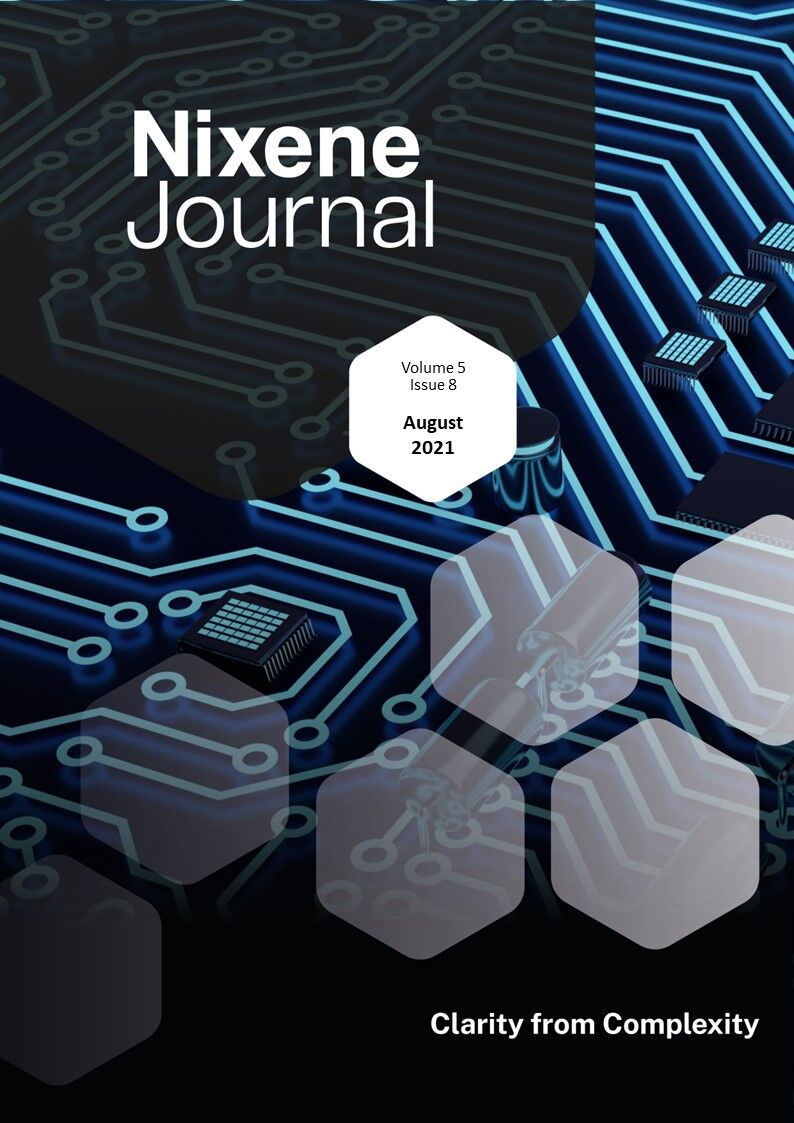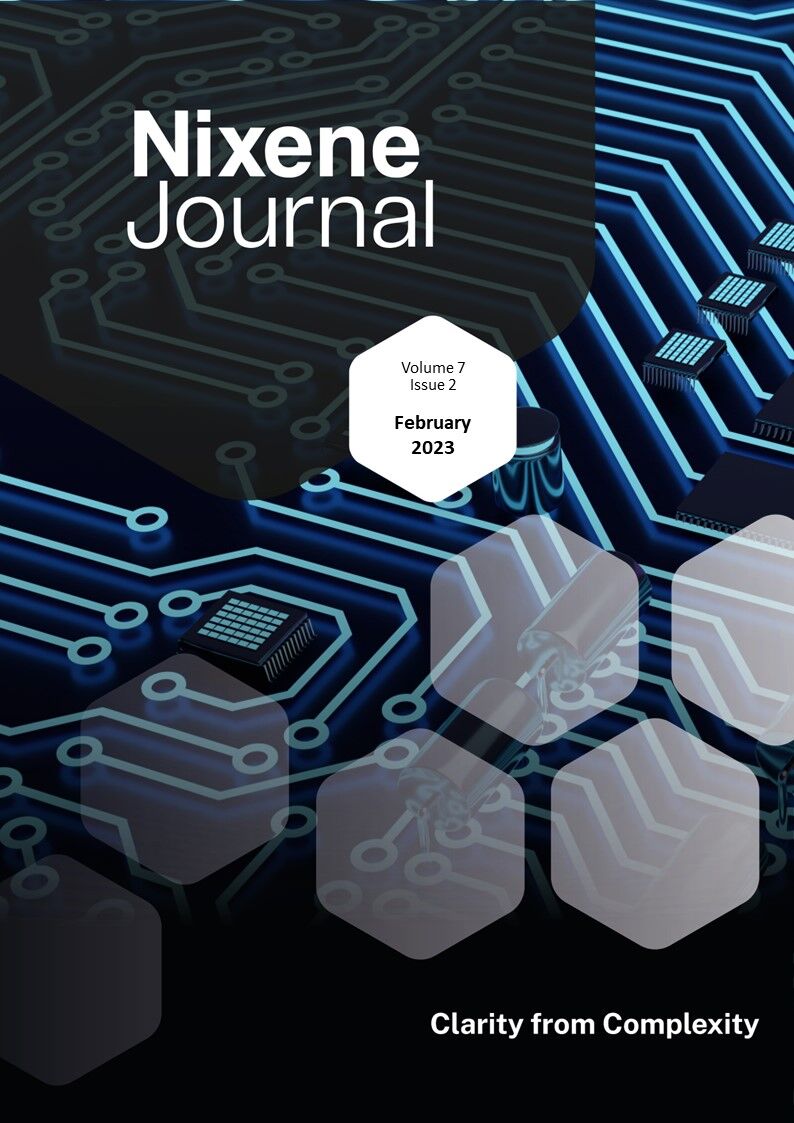Description
We begin this month with a review of a new book by James Baker and James Tallentire – “Graphene: The Route to Commercialisation.” This book will be released later this month and well worth a read. It is part history of the graphene story and part how-to-guide to create a sustainable innovation ecosystem for new advanced materials.
Graphene composites are making the news. The graphene-asphalt road trials in the UK have produced successful results. Oxfordshire County Council reports that graphene-enhanced asphalt improves the life of the road surface by 70%, and graphene enhances the stiffness of the surface, making it less prone to rutting. Another trial is underway on a 700m stretch of road with heavier traffic to see if similar benefits are reported.
Korea is experimenting with graphene-metal composites to build new power lines for its electricity grid. The national power company announced a research project to enhance the power transmission capacity of the country’s energy distribution network.
On a smaller scale, researchers in the USA are using graphene oxide scaffolds to create new bone using stem cells. Graphene oxide has been making more appearances on social media. Reuters felt compelled to investigate claims that graphene oxide was being put into ibuprofen tablets. Their conclusion was that these are false claims.
Elsewhere, rather serious accusations are starting to emerge about one of Canada’s biggest graphene companies. Zentek (previously Zen Graphene Solutions) has been accused of unethical business practises.
Prof. Rodney Ruoff’s group in Korea have been working with teams in Saudi Arabia and China to make large area single-crystal graphene. They used the chemical vapour deposition (CVD) process but allowed graphene to diffuse into the copper metal close to its melting point. This grew the graphene at the interface between the metal and a sapphire substrate. They added another clever step by diffusing nitrogen into the copper then rapidly heating the sample. This caused the nitrogen to expand, blowing off the copper, leaving the graphene exposed and undamaged. We can expect the team to speed up and scale up the process over the coming years. This team is one to watch.
There are many more things to watch out for in this issue, dear reader. I will delay you no longer and let you dive into this month’s carefully curated content…
Adrian Nixon,
1st April 2022










